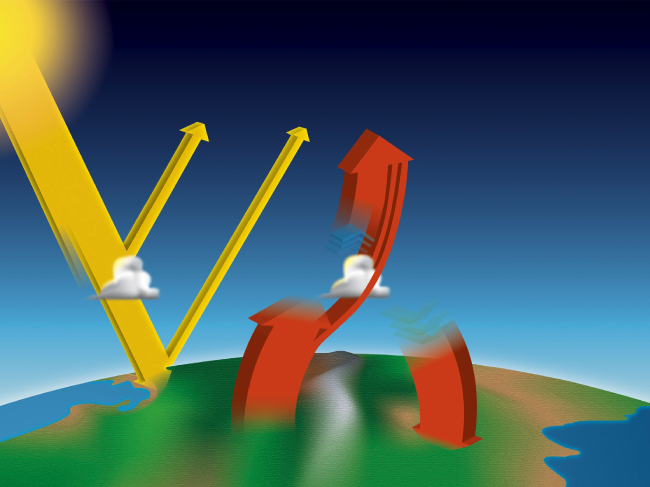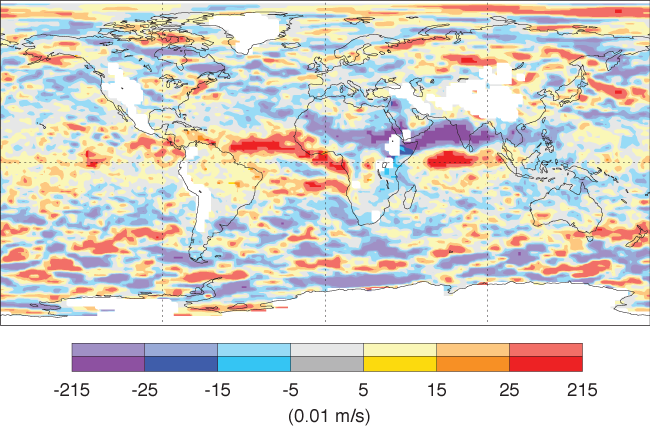

A workshop on the Earth’s radiation budget hosted by ECMWF from 18 to 21 October heard that progress has been made in radiation modelling at ECMWF.
ECMWF scientist Robin Hogan told the meeting that three-dimensional effects of clouds on radiation have a significant impact on surface radiation. Recent progress in modelling these effects means it may become possible to include them in global models, potentially leading to improved surface temperature forecasts, he said.
Aerosols – small particles dispersed in the atmosphere in various concentrations – also absorb and emit radiation and, as a result, have an impact on weather and climate.
ECMWF scientist Alessio Bozzo told the workshop that the introduction of a new monthly aerosol climatology has brought regional improvements in forecast skill.
The workshop was organised by the science teams from the CERES, GERB and ScaRaB satellite missions, which are dedicated to providing observational data on the Earth’s radiation budget.
Radiation and clouds
Clouds both reflect and absorb radiation coming from the sun, the Earth’s surface, the atmosphere and other clouds. However, their varied shapes and ephemeral nature make it difficult to accurately represent these different fluxes in weather and climate models.
Traditionally global models have only taken into account the radiation absorbed or emitted by clouds in the vertical direction.
Including the fluxes through the sides of clouds was deemed to be too computationally expensive.

Solar radiation (yellow) is partly reflected and partly absorbed by clouds, the atmosphere (including aerosols) and the Earth’s surface. The surface, the atmosphere and clouds in turn emit infrared radiation (red), some of which escapes to space. The radiation budget is zero if there is equilibrium between the energy received from the sun and the energy emitted to space. (Diagram: NASA)
But studies have suggested that failing to consider the full ‘3D’ fluxes through all sides of clouds can lead to significant errors in the radiation budget.
Now scientists claim that advances in modelling these 3D effects have reduced the computational cost to a point where it may become possible to include them in operational models.
“Researchers from ECMWF and the University of Reading have managed to simplify the algorithms used to calculate 3D radiative fluxes while maintaining the required accuracy,” Dr Hogan said.
“This has the potential to improve surface temperature forecasts and the information we provide on surface radiation that is used by the solar energy industry, but more work is needed to characterise cloud shape and cloud clustering,” he added.
Radiation and aerosols
The distribution of aerosols in the atmosphere is included in weather and climate models because of their effects on radiation.
The current version of ECMWF’s Integrated Forecasting System (IFS) uses a monthly-mean climatology of aerosol distribution based on global transport models and emission scenarios developed almost 20 years ago.
The EU-funded Copernicus Atmosphere Monitoring Service (CAMS), which is operated by ECMWF, has recently completed a new global reanalysis of atmospheric composition for the period 2003–2015.
ECMWF has used this data to construct a new monthly aerosol climatology for the IFS.
“Experiments show that the impact of the new aerosol climatology is most pronounced in a few sensitive regions, where we can see improvements in predictions of the local weather,” Dr Bozzo said.
“This is particularly noticeable in the monsoon region west of India, where errors in five-day west-to-east wind speed forecasts were reduced by more than a third in some areas,” he pointed out.

The chart shows differences in five-day forecasts of west-to-east wind speed at 850 hPa between the current operational system and a system using the new aerosol climatology, for the monsoon months of June to August 2015. Bold colours indicate statistically significant differences at the 5% level.
Future work will explore the scope to improve forecast skill further by using a more dynamic and interactive representation of aerosols in the IFS.
Further information
More details on the work on radiation and clouds can be found in two recent Journal of Geophysical Research articles by Sophia Schäfer et al. and Robin Hogan et al.
Details on the new CAMS interim reanalysis (CAMSiRA) can be found in an article currently in online discussion for the journal Atmospheric Chemistry and Physics by Johannes Flemming et al.
Top photo: Skarie/iStock/Thinkstock
